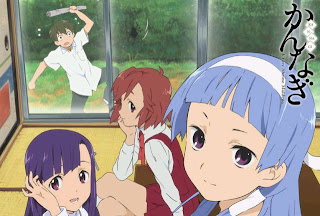As it turns out, the “Aniplex TBA” panel at Otakon 2009 was dedicated to Kannagi: Crazy Shrine Maidens, and featured Yutaka Yamamoto as well as members from the Aniplex team. The American production team from Bandai Entertainment spent most of the panel asking Yamamoto et al about specific developmental aspects of the series.
As with most introductions, the easiest thing on which to elaborate first was how the series came to be. This was mostly due to a professional relationship Yamamoto had formed while working with someone on the project “Swing Big.” After Yamamoto climbed in the ranks, he caught her attention, was taken more seriously, and, more importantly, was given the chance to help make Kannagi a reality.
Another query was one of change, specifically those needed/wanted between manga and anime. Here, Yamamoto relayed that the anime team was devoted to the idea of completely complementing the original. As the original manga author (Eri Takenashi) was asked to be directly involved, the anime team made sure never to subtract, but only add when necessary and according to the author’s permission.
The process of voice actor selection was also of interest. As it turns out, a voice talent agent supplied more than 30 people for the main character. Each was asked to try out for all the female roles, and Ms. Tomatsu, who would eventually win the lead, was thought to be equally well-adept at each one. So well did she portray each character (according to the sound director as well as the Takenashi), that her assignment to the lead came down to that fact that she physically resembled the 2D character.
A rather interesting aspect of any show that is rarely given any credence, much less justification or explanation, is the opening/closing credit sequences. While demanded by the studio (probably due to the success of Haruhi Suzumiya), Yamamoto ensured they would be metaphorical. The opening was expressive of the main character’s pop-idol attributes, while the closing exemplified her more divine aspects (minds out of the gutter, boys. We’re talking spirits and goddesses, not heavenly curves).
In a reverse Q&A session, seeing as the Americans already got to ask their questions, Yamamoto was asked to pose any queries he might have for the American production staff or fans. His question was concerned with how viewers in the United States would accept the divine aspect of the series. Seemingly expecting negative feedback, Yamamoto’s face beamed as his translator conveyed that members of the panel audience said that America is big enough to accept all ideologies, that it welcomes the stories of other cultures in their own context without feeling encroached upon/preached unto, and that spirituality in art can be taken metaphorically and without offense.

